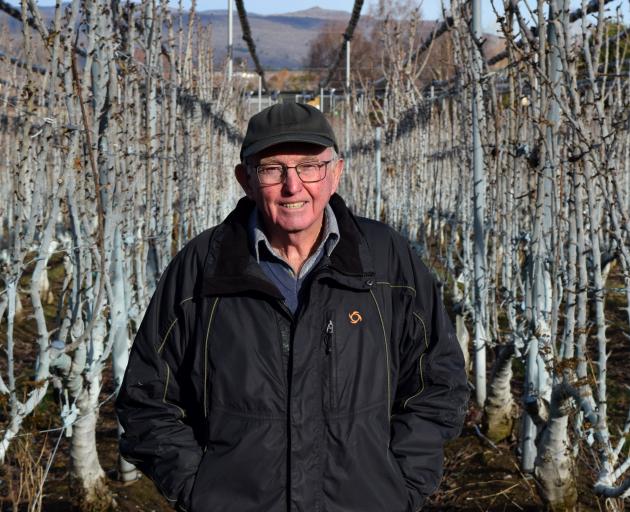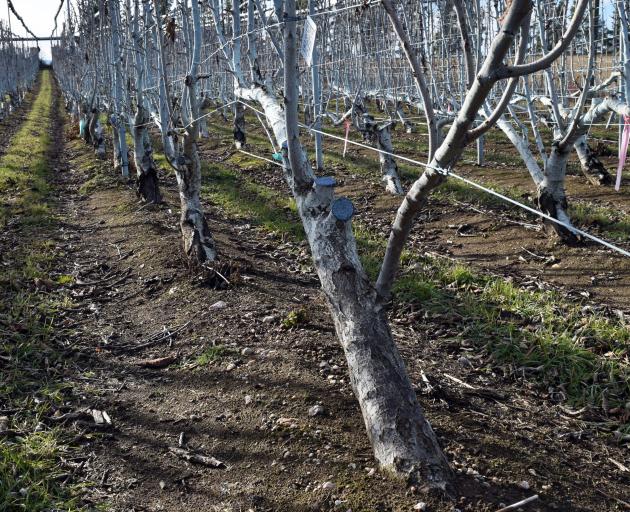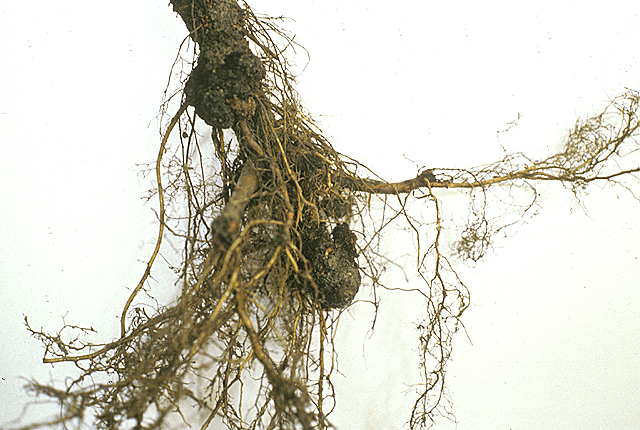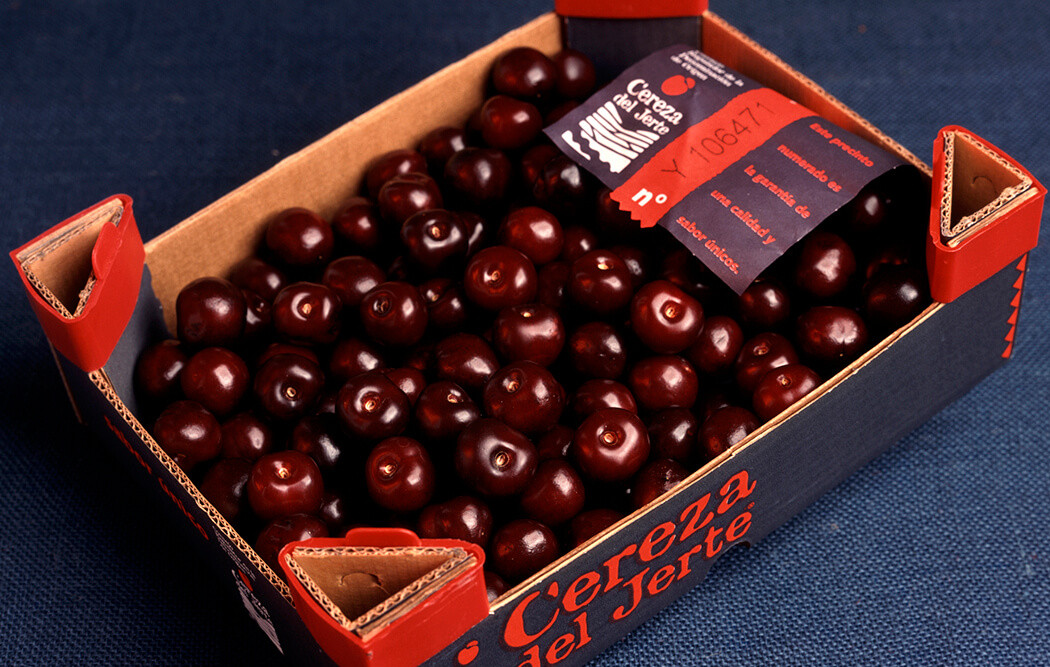Conventional cherry trees are on the verge of extinction, according to a Central Otago consultant.
According to the Ministry for Primary Industries' report "Situation and Outlook for Primary Industries," published last month, the New Zealand cherry industry reached a record export revenue of $92 million for the season ending March 31 this year, up 10% from the previous season.
The outlook for the New Zealand cherry industry is positive, with the export quantity expected to grow by 3% to 3930 tonnes for the season ending in June next year, the report says. "New large-scale commercial blocks are coming into production, and the industry continues to look to new technologies to help boost productivity. One example is a new planting system being trialed in Central Otago," the report states.
Introducing Central Otago cherry-growing consultant Earnscy Weaver, who has introduced a new cherry cultivation system in New Zealand.
The UFO (Upright Fruiting Offshoot) system was developed in the United States. The system involves planting cherry trees at a 45-degree angle and pruning branches to leave upright shoots. The system brings orchard rows into a two-dimensional structure for even light penetration across the canopy, producing uniformly high-quality fruit.
In the UFO system, tree rows are spaced 3 meters apart, closer than conventional ones. "In the end, we are just harvesting light: without light, you can't grow anything, and you need to maximize it." Mr. Weaver heard Dr. Matt Whiting, a U.S. horticulturist, speak about the UFO system at a conference in Tasmania in 2008. Returning to Central Otago, he contacted Tim Jones, CEO of 45 South, one of New Zealand's largest cherry exporters.
Mr. Jones allowed a row of cherries to be planted with the UFO system in an orchard in Cromwell. The trial developed and demonstrated the system's effectiveness. "I was lucky that Tim Jones gave me the opportunity to work with him to develop it: that's when the spark hit."
Conventional cherry trees were "becoming unsustainable" because they promoted system inefficiencies, such as the need for staff to climb high ladders to pick fruit and prune branches.
Branches in a UFO system could be easily pruned by unskilled staff because it was a simple, paint-by-numbers or "prune-by-numbers" system. "You can't do that with the old conventional trees because it's an art form."
Other advantages of the UFO system include the reduction of cherry splitting because the fruits are covered by leaves on the upright branches, protecting them from rain. In a UFO system, cherries are less damaged by birds because the upright branches do not allow birds to perch and eat.
The Crown research institute Plant & Food Research has designed a variant, the Future Orchard Planting System (FOPS), and promoted planting trees 2 meters apart to increase productivity and efficiency.
Weaver estimates that up to 400 hectares of cherries in about 20 orchards use a mix of UFO and FOPS system features in Central Otago, including his 2-hectare orchard in Springvale near Alexandra. He and his wife Irene planted the block in their "commercial block" about eight years ago. "It's fun and just enough to be commercial." The orchard generates a gross income of about $600,000.
The reasons for choosing cherry cultivation over other types of fruit were the challenge and the economic return. Apricots were his favorite fruit, but cherries were chosen because much more information was available on how to grow a commercial crop, thanks to more in-depth research on this fruit.
The grower is always looking for ways to improve cherry production. A rain cover has been installed in the orchard to reduce waste. "I've spent too many years losing the crop to rain. You work hard for 11 months and 28 days, then it rains, and bang, you've lost everything. It's absolutely cruel."

Image 1: Shawn McAvinue
It took about three years to figure out the best way to grow fruit in an orchard under rain. He constantly tested production factors, and some worked better than others: "there's snake oil." Products that proved effective in his orchard include reflective mulch and liquid fertilizer.
Learning about new technologies to improve a crop makes the job "fun and worth getting up in the morning," he said. He has grown fruit most of his life and has always learned, attending international cherry symposia and reading the latest research. "You pedal a lot to keep up because this game keeps changing rapidly."
In his orchard, he plants tree rows 2 meters apart, as recommended by Plant & Food Research. However, he found 2 meters between rows "tight." In hindsight, he would have planted the rows 2.25 meters apart to have more space to drive machinery. "I get here and I'm too busy looking at the trees, and I run into the posts."
An orchard planted with the UFO system could contain twice the trees of a conventional system. Consequently, a disadvantage of installing a UFO system was the increased capital cost of setting up an orchard with twice the trees, posts, and wires. "You have to evaluate the return on capital, but the outcome pays for itself."
The Central Otago cherry industry was part of a boom-and-bust cycle, and he believed the sector was in a decline phase. He said cherry growers must produce 30mm or larger fruit to earn a market premium and remain profitable. His mantra was "bigger is better," but the larger a cherry, the more exposed it was to damage. All crops "hit a wall," and cherries are no exception. He once believed the cherry industry would hit the wall in the early 2000s and "it's still going."
For the cherry industry not to hit the wall, growers must produce "big, hard, fresh, and tasty" fruit to ensure the continued demand for exports. Growers must strive to improve the quality of their fruit continually: "If we keep doing what we are doing now, we will fall behind, so we have to keep growing, and that's the challenge."
New Zealand exports nearly 4,000 tonnes of cherries. In comparison, Chile exports about 500,000 tonnes of cherries. Because the New Zealand cherry industry is much smaller, it has the opportunity to be better, as the larger an industry, the more challenging it can be to consistently provide high-quality fruit.

Image 2: Cherry trees in a UFO system in Earnscy Weaver's orchard near Alexandra.
New Zealand produces some of the best and some of the worst cherries in the world. In the past, a mix of quality cherries was exported, but improvements have been made in this area. New Zealand growers must adopt any new technology available, such as the UFO system, to remain competitive.
A challenge for New Zealand cherry growers was China. Chinese growers learned from New Zealand growers, who once had an advantage of being the first to supply cherries to the Chinese market. Still, now the Chinese season is earlier, and growers have matched the quality of New Zealand cherries.
Many New Zealand cherry growers focus on producing the best fruit to secure a market share in a competitive industry. Weaver concluded that "the cherry industry in New Zealand will have to continue to improve production practices and adopt new technologies to remain viable."
Source: Rural Life
Images: Otago Daily
Cherry Times - All rights reserved














